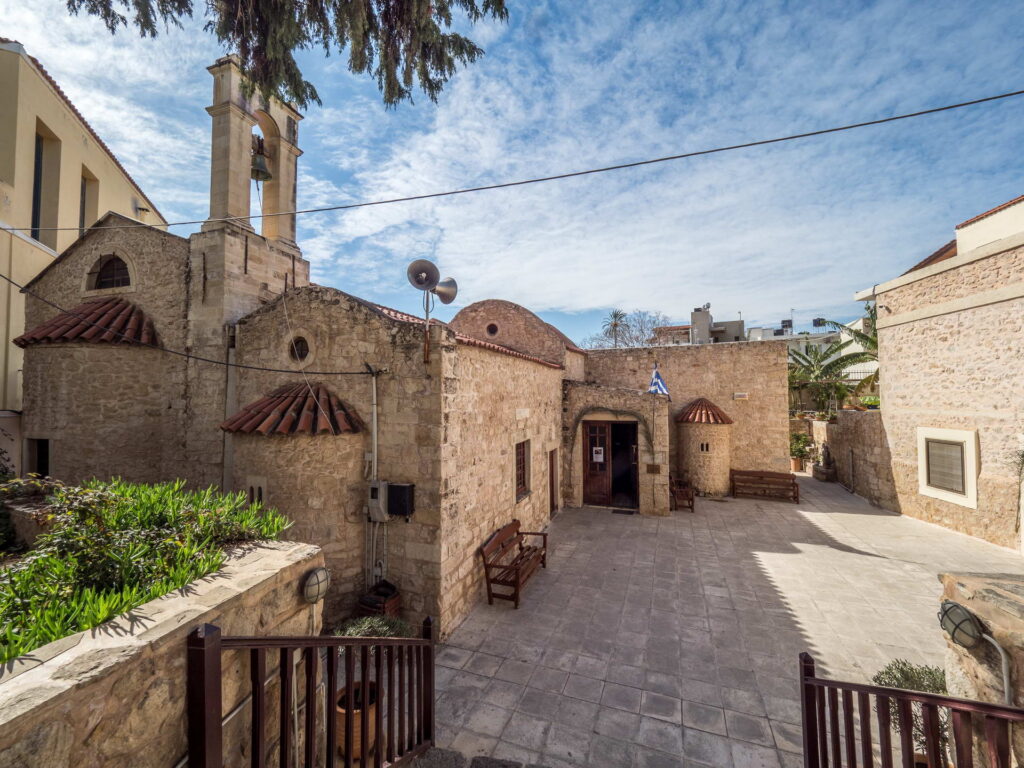The new temple of Agios Matthaios (Saint Matthew) was built, probably as a family chapel, in the early 17th century, occupying the site of an older Byzantine temple which had been destroyed by an earthquake. Following the Ottoman conquest, it was given as a metochion (small monastic establishment) to the Saint Catherine’s Orthodox Monastery of Mount Sinai, to counterbalance the conversion of the temple of Saint Catherine into a mosque. In the following centuries, together with the temple of Saint Minas, those temples were the two main orthodox churches of the city and thus, the building’s forecourt was used as a burial place for many influential members of the Christian community. At present, two alcoves with frescoes are still visible on the north side as well as a built-in inscription of 1600 on the south gate of the temple. In addition, the temple houses a collection of portable icons, including major works of the Cretan School of Iconography, such as “The Crucifixion” by Georgios Kastrofylax (1752), “Saint Titus and scenes of the life of the 10 martyrs” by Ioannis Kornaros (1773) and two unsigned icons by Michail Damaskenos.



